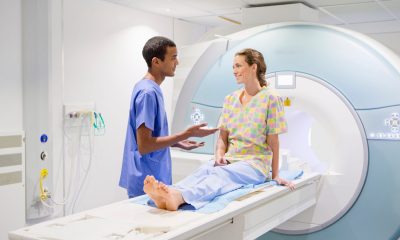By Georgia Lambert via SWNS
A certain cell behavior pattern that predicts heart attacks and strokes has been identified.
The promising revelation could drive the development of new treatments to minimize the consequences of heart attacks, say scientists.
A research team led by Dr. Andrés Hidalgo from the Centro Nacional de Investigadores Cardiovasculares (CNIC) has discovered that circulating neutrophils—a type of immune cell— produce different behavior patterns during inflammatory events.
Neutrophils are immune cells that form the first line of defense in the body but their existence can also damage healthy cells, including cells in the heart and chest.
“Several studies have linked the presence of neutrophils in blood to higher risk and severity of cardiovascular disease,"said Georgiana Crainiciuc, the study's first author.
Crainiciuc went on to point out that it is not possible to protect the cardiovascular system simply by removing neutrophils, as this would "leave the body defenseless against any pathogen that threatens it."
To resolve this problem, the study's authors sought to identify the specific types of neutrophils that cause vascular injury.
The researchers started by analysing the cells by using a technology called high-resolution intravital microscopy, which showed the cells within the blood capillaries of live animals.
The scientists then designed a highly novel computer system that allowed them to find out how the cells behave in vessels, by measuring any changes in size, shape, or movement.
This data identified three neutrophil behavior patterns that occurred during inflammatory processes and further analysis showed that only one of them, characterized by a large size and proximity to the vessel wall, linked to heart injury.
By combining their computer system with a vast genetic analysis using animal models, the authors were able to identify the molecules responsible for the harmful neutrophil behavior that causes serious injuries.
The team found that the culprit of pathological behaviour is a single molecule, "Fgr."
This discovery has provided the key to selecting the right type of medication to prevent inflammation and the death of cells after a heart attack.
“The idea now is to continue with further tests and analysis needed to convert this into a clinical treatment for patients,"Crainiciuc said.
The scientists not only believe that their findings are a major advance towards the improved approach to treating heart disease, but they also feel that the study could support the methodology currently used for analyzing immune cells.
“With current techniques, researchers can analyze a large number of genes and molecules per cell, and this has enabled the discovery of numerous cell populations associated with the development of disease,"said Dr. Miguel Palomino-Segura, the study's co-first author.
"Nevertheless our model is unique because it allows the identification of cells not from their genetic profile but from their activity during a disease.
"This is a completely new approach to the study of immune processes that exploits the dynamism of the disease state to generate new information.”
Hidalgo pressed that this monitoring technique can only be captured under a microscope and said that the "key to this approach is the ability of neutrophils to change their shape, activity, and capacity to migrate in a matter of seconds.
"These rapid changes can only be captured under the microscope."
Jon Sicilia, the study's co-author, and bioinformatician, was in charge of the analytical part of the project.
"This technology has been applied to other kinds of data, but this is the first example of its use to treat microscopy data, and the results have been surprising," said Sicilia.
The authors now hope that this new methodology will find its way into other scientific arenas.
“The idea now is to apply this technology in other settings, such as infection or cancer, in which immune cells also play a critical role in disease progression,"Palomino-Segura said.
This study was published in the journal Nature.

 Parenting6 days ago
Parenting6 days ago
 Lifestyle5 days ago
Lifestyle5 days ago
 Broadcast1 week ago
Broadcast1 week ago
 Good News2 days ago
Good News2 days ago
 Broadcast1 week ago
Broadcast1 week ago
 Money1 week ago
Money1 week ago
 Health2 days ago
Health2 days ago
 Environment1 week ago
Environment1 week ago






















